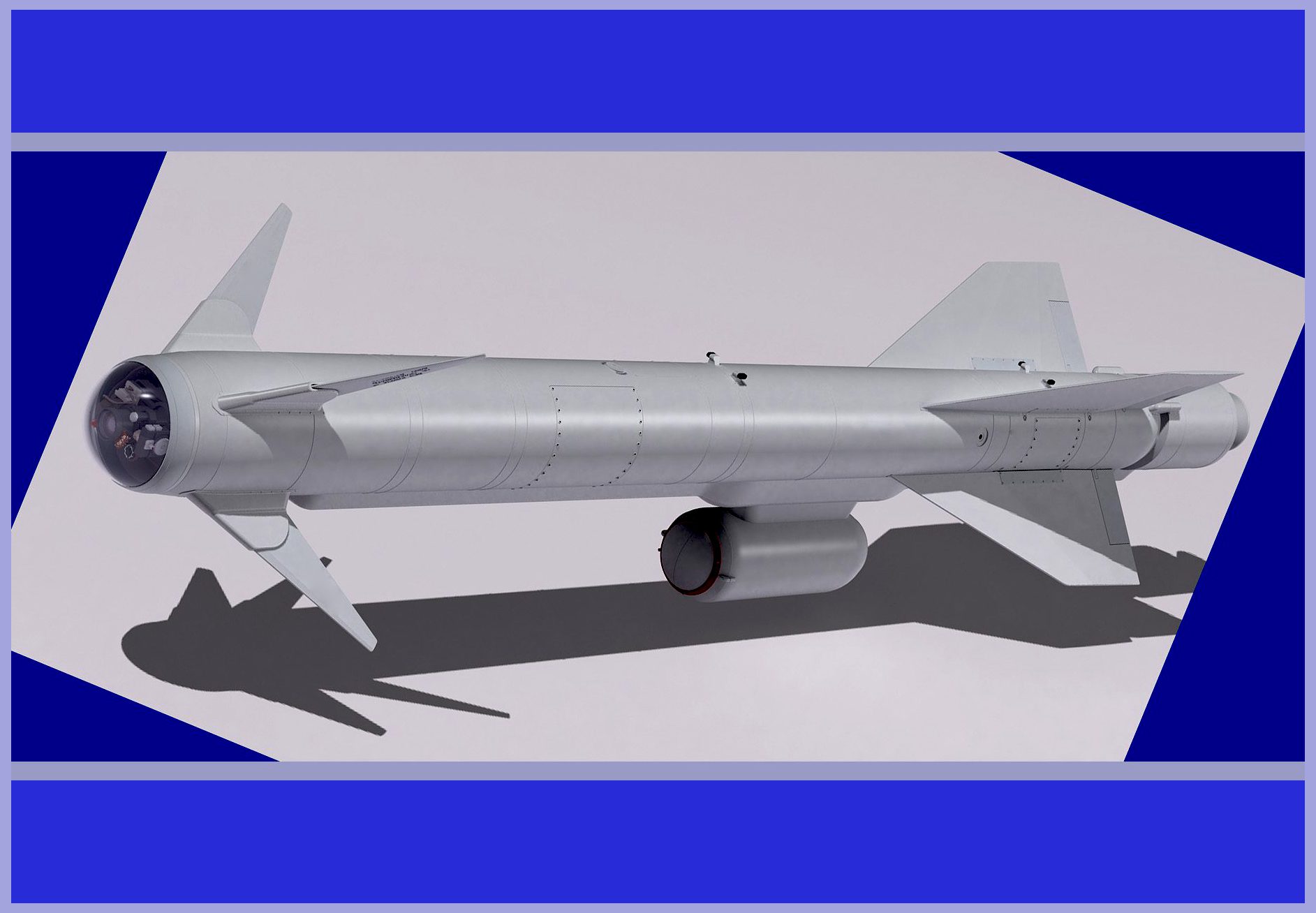The Kh-59 Long Range Precision Strike ASM has been a key asset in the Russian military’s arsenal for decades, showcasing its effectiveness in achieving strategic objectives. In this article, Let’s Delve Into Kh-59 Long Range Precision Strike ASM, also known as AS-13 ‘Kingbolt’ according to the NATO code name. It is a Russian TV-guided cruise missile with a two-stage solid-fuel propulsion system. The Kh-59 missile is an air-launched, long-range precision strike weapon developed by MKB Raduga. It can be carried by tactical aircraft and is capable of engaging ground targets with high accuracy.
The missile boasts an impressive range of up to 290 kilometres and operates at subsonic speed. Its guidance system is a fusion of inertial guidance and seeker systems like television (TV) or millimetre-wave active radar seeker homing. With a diverse selection of warheads, including high explosive and cluster options, the missile possesses formidable destructive power and can effectively penetrate hardened structures to neutralize enemy targets.
This technological advancement is expected to significantly enhance Russia’s strategic posture and provide a deterrent effect against potential adversaries. The upgraded Kh-59 missile represents a noteworthy milestone in the ongoing modernization efforts of the Russian military, showcasing the nation’s commitment to maintaining a cutting-edge defence arsenal.
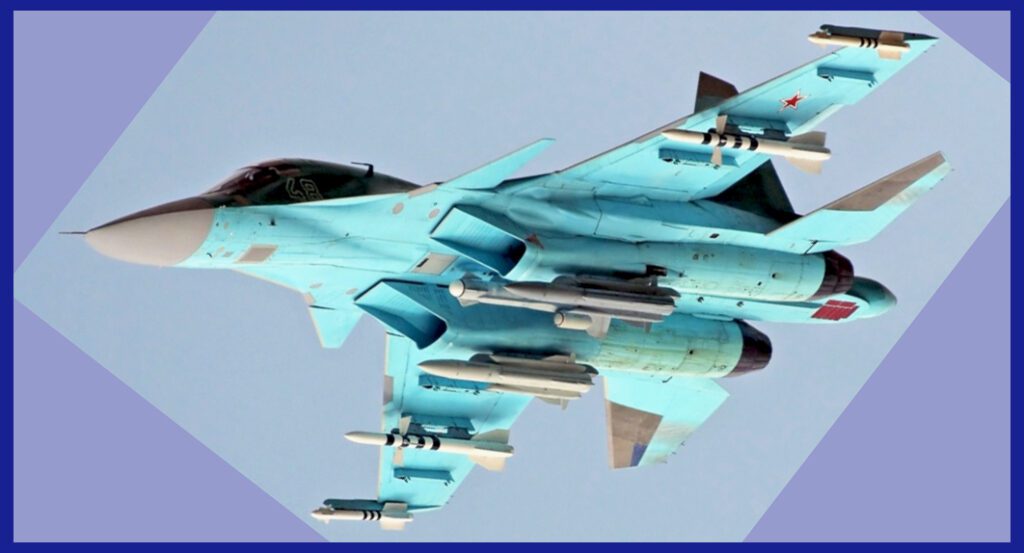
Analyzing The Design Of The Kh-59 Kingbolt ASM
The design of the Kh-59 Kingbolt ASM ( Air-to-Surface Missile ) exemplifies a meticulous balance between extended range, exceptional accuracy, and formidable payload capacity. The original Kh-59 is propelled by a robust solid fuel engine, augmented by a solid fuel accelerator positioned in the tail section. The strategically positioned folding stabilizers adorn the missile’s fore, complemented by resilient wings and a responsive rudder at the rear.
Employing a radar altimeter, the Kh-59 gracefully cruises at an optimal altitude of approximately 7 meters above water or 100–1,000 meters ( 330–3,280 ft ) above ground, meticulously navigating its trajectory. This potent weapon system can be unleashed at impressive speeds ranging from 600 to 1,000 km/h ( 370 to 620 mph ), soaring at altitudes ranging from 0.2 to 11 kilometres ( 660 to 36,090 ft ), while achieving an impressive Circular Error Probable ( CEP ) of 2 to 3 meters.

The Kh-59ME is equipped with an external turbofan engine discreetly positioned beneath the body, just forward of the rear wings, while also retaining the powder-fuel accelerator. Moreover, it showcases a robust dual guidance system that synergistically combines an inertial guidance system for precise navigation within the target vicinity, complemented by a television system responsible for guiding the missile directly towards its intended target.
Notably, the 36MT turbofan engine, tailor-made for the Kh-59M missile class, has been successfully developed by NPO Saturn in Russia. Before launch, meticulous inputting of target coordinates triggers the initiation of the initial flight phase, seamlessly adhering to the principles of inertial guidance. Once the missile reaches a critical proximity of 10 kilometres ( 6.2 miles ) from the designated target, the television guidance system seamlessly activates.
It is the responsibility of the weapon system operator to visually identify the target and skillfully lock the missile onto its trajectory, ensuring unwavering precision and utmost efficacy in engagement.

A Short Summary Of Its Key Design Features
- Airframe: The Kh-59 features a streamlined airframe with swept wings and a slender fuselage. This design reduces drag, enhances aerodynamic performance, and allows the missile to achieve extended ranges while maintaining stability during flight.
- Guidance System: The Kh-59 utilizes a combination of inertial guidance and seeker systems. Its initial flight phase relies on an internal navigation system that follows pre-programmed coordinates, ensuring the missile stays on the intended trajectory. As it approaches the target, the seeker system activates, enabling the missile to home in on the target using TV or active radar guidance.
- Warhead: The missile is equipped with a variety of warhead options based on mission requirements. These include high-explosive fragmentation warheads and penetrator warheads for striking hardened targets. The warhead is located in the nose section of the missile, ensuring optimal impact effectiveness.
- Range: The Kh-59 boasts an impressive operational range from 200 to 290 kilometres on certain variants. This extended range allows the launching aircraft to engage targets from a safer distance, reducing the risk of enemy countermeasures and enhancing the overall effectiveness of the mission.
- Launch Platform Compatibility: The design of the Kh-59 enables its compatibility with a range of aircraft platforms, including tactical aircraft like the Su-24, Su-30 and Su-34. The missile is typically carried on external hardpoints under the wings or fuselage of the aircraft, ensuring easy integration into the aircraft’s weapons system.
- Upgraded Variants: Over time, the Kh-59 has undergone several upgrades, resulting in improved performance and capabilities. These upgrades include advancements in seeker technology, such as the incorporation of dual-mode TV and IR seekers in the Kh-59 MK2 variant, further enhancing its ability to accurately locate and engage targets.
The design of the Kh-59 Kingbolt ASM highlights a comprehensive approach to long-range precision strike capabilities. Its streamlined airframe, sophisticated guidance system, and versatile warhead options make it a formidable weapon in engaging ground targets with high accuracy. The ongoing upgrades and advancements reflect a commitment to continually improving its design to meet evolving operational requirements.

Development of the Kh-59 Kingbolt ASM
The development of the Kh-59 Kingbolt ASM ( Air-to-Surface Missile ) can be traced back to its origins in the Soviet Union during the 1970s. This ambitious project sought to create a long-range, precision strike missile with the capability to effectively engage ground targets. The initial design drew inspiration from the Raduga Kh-58 ( AS-11 ‘Kilter’ ), but unfortunately, it had to be abandoned due to the missile’s excessive speed, which hindered visual target acquisition. It is widely believed that the development of the Kh-59M commenced in the 1980s, and detailed information about this variant was first unveiled in the early 1990s.
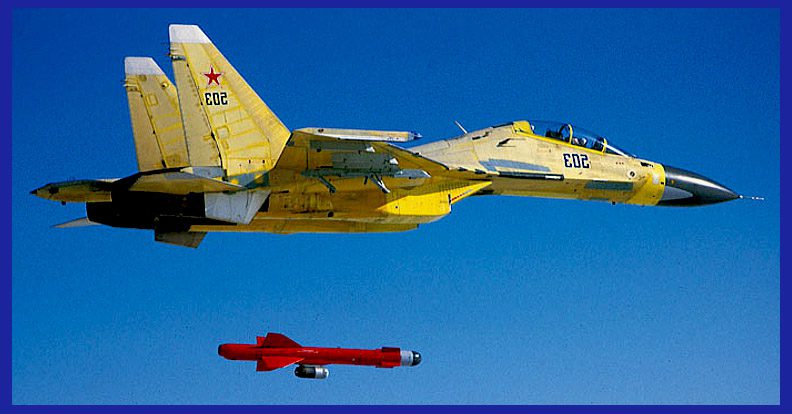
An Overview Of Its Development
- Origins and Design: The Kh-59 Kingbolt originated from the design efforts of the Raduga Design Bureau, a well-known Soviet aerospace company with expertise in missile development. The engineers at Raduga dedicated their efforts to crafting an air-launched missile that could achieve extended range, high accuracy, and the capability to engage a diverse array of ground targets.
- Design Iterations: The initial variants of the Kh-59 featured inertial navigation guidance systems, which allowed for pre-programmed flight paths to designated targets. These early versions were primarily employed by strategic bombers like the Tu-95 and Tu-160.
- Operational Deployment: The Kh-59 Kingbolt has been deployed by the Russian Air Force and utilized in various conflicts and military operations. It has demonstrated its effectiveness in engaging ground targets accurately from extended distances, contributing to the tactical capabilities of the aircraft carrying it.
The development of the Kh-59 Kingbolt ASM represents the continuous effort to improve precision strike capabilities and maintain a competitive edge in modern warfare. Through iterative design iterations, guidance system upgrades, and range enhancements, the Kh-59 has evolved into a formidable air-to-surface missile, serving as a vital component of Russia’s aerial arsenal as of now.
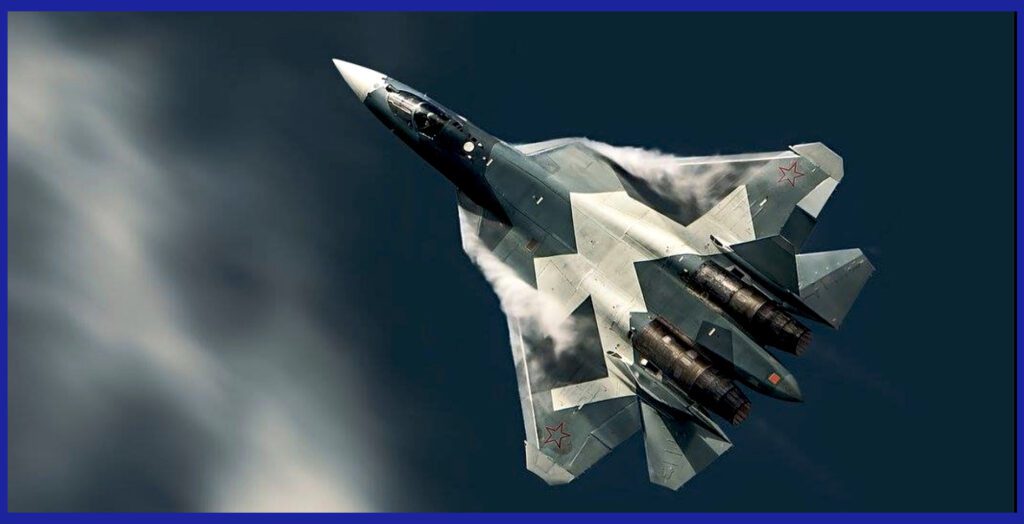
Later Generation Kh-59 Kingbolt Variations
Several later-generation variations of the Kh-59 Kingbolt ASM ( Air-to-Surface Missile ) have been developed to enhance its capabilities. These variants incorporate advanced technologies and improvements to increase range, accuracy, and target engagement capabilities.

- Kh-59M: This upgraded version of the Kh-59 features improved guidance systems and an extended operational range, along with the inclusion of a turbojet engine and a larger warhead. The range has been increased to 115 kilometres. Notably, it incorporates an upgraded inertial navigation system and an enhanced seeker, resulting in improved accuracy and the ability to engage targets at significantly greater distances.
- Kh-59MK: This variant incorporates an upgraded TV guidance system, which grants the operator real-time video imagery of the target area, enabling enhanced situational awareness. Additionally, it boasts a remarkable range of 285 kilometres and is specifically designed as an anti-shipping platform, equipped with a turbofan engine and an ARGS-59 active radar seeker. This advanced configuration facilitates more precise target identification and engagement, particularly in intricate and rapidly changing environments.

- Kh-59MK2: This advanced variant combines both television ( TV ) and infrared ( IR ) guidance systems, creating a dual-mode seeker. This innovative feature allows the missile to seamlessly switch between TV and IR guidance, adapting to the specific characteristics of the target and prevailing environmental conditions. As a result, it significantly enhances the probability of successful target acquisition and engagement. Notably, it serves as a land attack variant of the Kh-59MK ( fire-and-forget ) and is equipped with either a 320 kg penetrating warhead or a 285 kg ( 628 lb ) pellet warhead. This impressive variant was first unveiled at MAKS 2015, showcasing its cutting-edge capabilities.
- Kh-59ME: This is an export variant of the Kh-59 series, specifically developed to cater to the demands of international customers. In 1999, a 200 km-range variant was introduced for export purposes. This variant encompasses similar capabilities to the Kh-59M, featuring an extended operational range and enhanced guidance systems. However, certain modifications have been made to ensure compliance with export regulations and requirements.
- Kh-59MKM: This formidable penetrator version eliminates the seeker section and instead incorporates a robust 360 kg ( 790 lb ) warhead, specifically engineered to penetrate up to 3 meters of reinforced concrete. This variant showcases remarkable power and capability, enabling it to deliver devastating blows to fortified structures with unwavering precision and unwavering destructive force.
The Kh-59 Kingbolt, History Of Operations
Based on reports, Russia delivered approximately 200 Kh-59 missiles to China for utilization on the Su-30MK2 aircraft between 2008 and 2015. These deliveries potentially encompassed both the Kh-59MK and Kh-59MK2 variants, providing China with advanced precision strike capabilities.
Notably, during the 2018 deployment of the Su-57 stealth fighter in Syria, the Kh-59MK2 was test-fired, showcasing its compatibility and effectiveness with the next-generation aircraft.
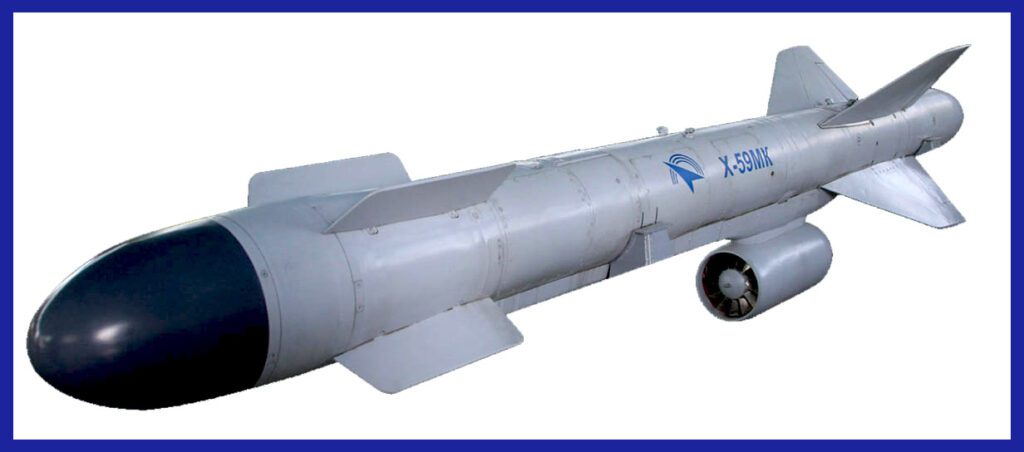
On 4 April 2022, amid the Russian invasion of Ukraine, compelling photographic evidence emerged on various Telegram channels. The images revealed the launch of a Kh-59M missile by the Russian Air Force, specifically targeting a grain silo near Mykolaiv, Ukraine. The entire trajectory of the missile was captured on closed-circuit television ( CCTV ) as it navigated towards its designated target area, leaving a trail of destruction in its wake.
Further developments unfolded on 16 August 2022 when the Ukrainian Air Force officially confirmed through social media channels that Kh-59 missiles were employed in a precision strike against an airbase located in the Zhytomyr Oblast. These highly capable missiles were fired from Su-34 jets, believed to have originated from the direction of the Belarusian border. This attack demonstrated the Ukrainian Air Force’s determination to counter the aggression and protect strategic assets amidst the ongoing conflict.
The utilization of Kh-59 missiles in these military operations underscores their significant role as potent air-to-surface weapons, capable of delivering precise and devastating strikes on enemy targets.
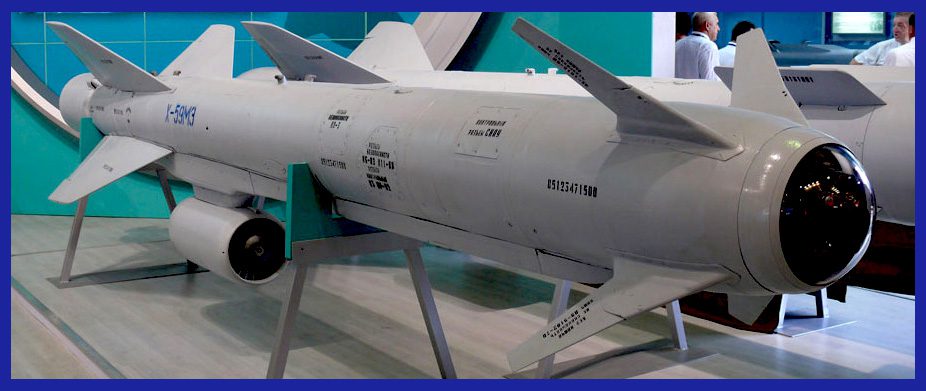
International Operators Of The Kh-59 Include
Currently, an impressive roster of eight countries, including Russia and China, operates the formidable Kh-59 Kingbolt ASM. This widespread proliferation serves as a testament to the international recognition of its exceptional power and effectiveness in modern warfare. The deployment of this missile transcends national boundaries, demonstrating its versatility and adaptability across diverse operational contexts. Its impact is felt on multiple continents, as operators harness its capabilities to project force, neutralize threats, and safeguard their respective national security interests.
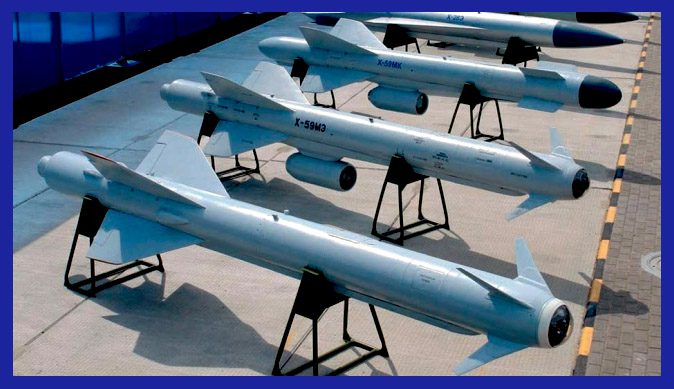
The Kh-59 Kingbolt Technical Specifications
- Weight: 930 kg ( 2,050 lb )
- Length: 18.33 ft ( 220 inches )
- Diameter: 15 inches
- Wingspan: 51.2 inches ( 130 cm )
- Warhead: Cluster or Shaped-charge fragmentation warhead, weighing 320 kg ( 705 lb )
- Engine: Kh-59: Two-stage rocket motor / Kh-59ME: The missile project initially utilized a rocket engine but later transitioned to a turbojet engine to enable precise cruising and extended operational range
- Operational Range: Kh-59ME: 200 km / Kh-59MK: 285 km / Kh-59MK2: 290 km
- Speed: Mach 0.88 max ( Standard subsonic speed )
- Guidance: Inertial guidance was initially employed, followed by a transition to TV guidance and the inclusion of a millimetre wave active radar seeker
- Launch Platform: All operational Russian Fighter aircraft which include: Su-27, Su-30MKI, Su-35, MiG-35, Su-24, Su-34 and Su-57

“Furthermore, it is important to highlight that you now have the extraordinary opportunity to acquire a remarkable scale model of the Su-30 and Su-57 fighter jet, conveniently available on Amazon and Air Models. Simply click the provided links to access this magnificent aircraft. This weapon system, renowned for its devastating capabilities demonstrated on the battlefield, serves as a testament to the unwavering dedication of the Russian military to advanced technology and precision warfare. With its compatibility across a wide range of Russian-origin aircraft, it stands as a formidable asset for any air force operating these platforms.”
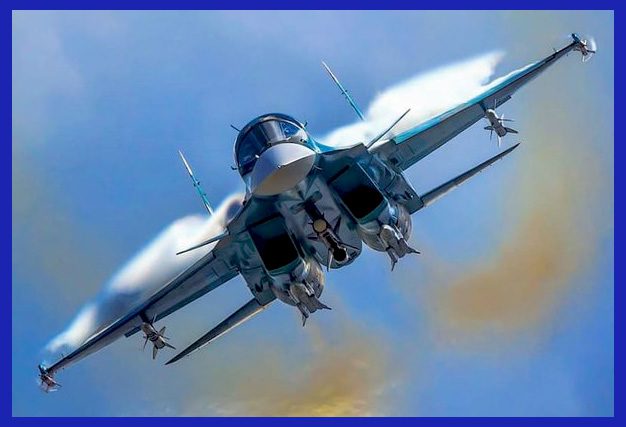
In conclusion, the later-generation variations of the Kh-59 Kingbolt ASM represent significant advancements in precision strike capabilities. With extended ranges, improved guidance systems, and advanced seekers, these variants enhance target engagement accuracy and adaptability in complex environments. They solidify the Kh-59’s role as a critical asset for the Russian Air Force and international users.
The continuous development of the Kh-59 series underscores a commitment to innovation and meeting evolving operational requirements. As air-to-surface missile technology evolves, these later-generation variations ensure enhanced precision, effectiveness, and strategic value, contributing to the success of modern military operations. The Kh-59 Kingbolt’s evolution reflects the ongoing pursuit of cutting-edge capabilities in the realm of precision strike weapons.
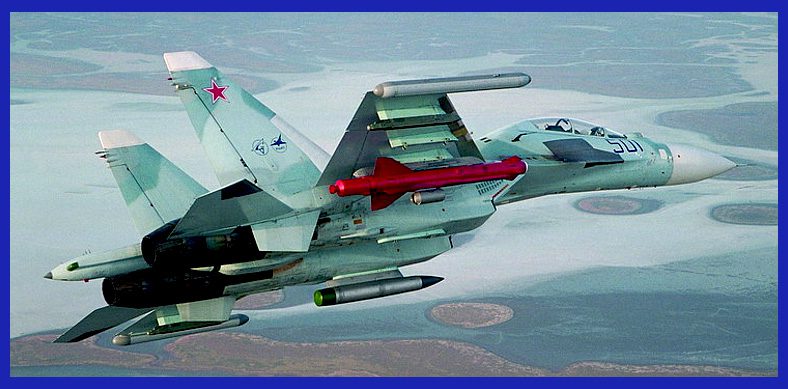
Important Announcement for Our Valued Readers!
After an article is published, it is possible that updates or changes may have occurred beyond the time of publication. Therefore, it is important to be aware that certain information in the article might be outdated. To ensure the most accurate analysis, it is highly recommended to verify the content with the latest sources available.
However, we are dedicated to delivering outstanding articles on military products and global updates. Maintaining quality and smooth operation requires resources. Your support sustains our efforts in providing insightful content. By purchasing high-quality products through our affiliated links, you help us keep our platform alive and acquire top-notch items. Your unwavering support is invaluable and inspires us to strive further.
We welcome your suggestions and requests for more information, as we value feedback from our readers. If there’s specific defence material or equipment not covered on our site, please share your request in the comments. We’ll strive to research and provide the required information. We sincerely thank you for your unwavering interest in our website, and we eagerly anticipate hearing from you! Enjoy your reading experience!
